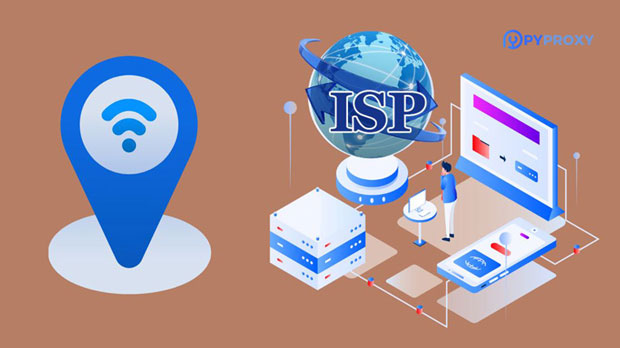When it comes to choosing a proxy service, determining whether it is the best proxy for your needs is crucial. Proxies are used for various purposes, such as ensuring online anonymity, bypassing geo-restrictions, and improving browsing speeds. With a myriad of proxy services available, it can be overwhelming to pick the right one. The best proxy is one that not only meets your needs but does so securely, efficiently, and with a solid reputation. In this article, we will explore the key factors to consider when evaluating a proxy service, including performance, security features, and reliability. 1. Speed and PerformanceOne of the most important factors to consider when choosing a proxy service is its speed and overall performance. A proxy's primary function is to relay your internet traffic, which can sometimes slow down your connection. Therefore, it’s essential to ensure that the proxy service you choose does not significantly impact your internet speed.Latency: Latency refers to the time delay between sending a request and receiving a response. A high-latency proxy can cause a noticeable lag in your browsing experience. To assess a proxy’s latency, look for services that offer high-speed servers with low latency.Bandwidth: A good proxy should provide enough bandwidth to handle your browsing or data requests efficiently. If the proxy service throttles bandwidth or limits the amount of data transferred, it can hinder your activities, such as streaming, gaming, or accessing large files.Consistency: The best proxy services offer consistent performance without sudden drops in speed. Proxy services that experience frequent speed fluctuations can disrupt your online activities, making them less desirable.2. Security FeaturesSecurity is another critical factor in evaluating the best proxy services. A proxy not only masks your IP address but also protects your data and online activity. Without proper security protocols, using a proxy can expose you to risks such as hacking, data theft, and privacy breaches.Encryption: The best proxy services offer strong encryption standards to protect your internet traffic. Proxy services that use SSL or other encryption protocols ensure that data transmitted between your device and the proxy server remains secure.Data Logging Policies: It’s essential to check the proxy’s data logging policy. The best proxies follow strict no-logs policies, meaning they do not track or store any information about your browsing activity. Avoid proxies that collect logs, as they can compromise your privacy.Anonymity Protection: Some proxies may leak your real IP address or DNS queries, which can compromise your anonymity. Look for proxies that offer full anonymity protection, preventing third parties from identifying your real identity.3. Location CoverageThe geographical coverage of proxy servers is another key factor to consider when selecting the best proxy. Proxy servers located in different countries or regions provide access to content restricted to those locations. The more server locations a proxy service offers, the more flexibility you have in accessing geo-blocked content.Global Presence: If you need to bypass geo-restrictions or access content from various countries, opt for a proxy service with a broad network of servers across different continents. A global proxy network ensures that you can access content from various countries with ease.IP Variety: A good proxy service offers a wide range of IP addresses. This ensures that you can switch between multiple IP addresses, which is particularly useful for tasks like web scraping, online gaming, or bypassing regional restrictions.Server Reliability: Having a large number of server locations is important, but server reliability is equally critical. Ensure the proxy service you choose has a reputation for maintaining stable, functional servers without frequent downtimes.4. Compatibility and IntegrationCompatibility with your devices and applications is another essential factor when determining if a proxy service is the best for you. The best proxy services support a wide range of devices and can integrate seamlessly into various software applications.Device Compatibility: Whether you are using a proxy on your desktop, smartphone, or tablet, the service should work smoothly across all devices. Make sure that the proxy supports operating systems like Windows, macOS, Linux, iOS, and Android.Application Support: Some proxies are designed specifically for certain applications, such as web browsers, gaming platforms, or business networks. Make sure the proxy service integrates well with the applications you plan to use, whether it’s for personal browsing or professional purposes.Proxy Protocols: The best proxy services support a variety of protocols, such as HTTP, HTTPS, SOCKS5, and more. This flexibility allows you to use the proxy for a range of tasks, including browsing, streaming, and securing private networks.5. Customer Support and ReliabilityReliable customer support is essential for ensuring that you can quickly resolve any issues with the proxy service. A good proxy provider should offer responsive support, particularly if you encounter technical difficulties or require assistance with setup.24/7 Support: Look for proxy services that offer round-the-clock customer support. Whether through live chat, email, or phone, prompt customer service ensures that you can get help whenever you need it.Knowledge Base: Some providers offer detailed knowledge bases or tutorials to help users troubleshoot common problems or set up their proxies. A well-maintained knowledge base can be a valuable resource for self-service.Reliability of Support: Customer service quality can vary. Choose a proxy provider that has a reputation for offering reliable and efficient customer support, ensuring your problems are addressed quickly and effectively.6. Pricing and ValueWhile price is an important consideration, it should not be the sole factor when choosing a proxy service. The best proxy services provide value for money by offering a balance of high performance, security, and reliability at a reasonable price.Subscription Plans: Proxy services usually offer different subscription plans based on usage requirements. Compare the cost of the service with the features it offers to ensure you’re getting good value. Some providers may offer a free trial or money-back guarantee, which allows you to test the service before committing.Hidden Costs: Be cautious of proxy services that advertise low prices but include hidden fees or limited features in their basic plans. Transparent pricing and clear feature lists are indicators of a trustworthy provider.Long-Term Value: In addition to upfront pricing, consider the long-term value of the service. The best proxy services should offer consistent performance, good customer support, and regular updates or improvements to justify the ongoing cost.ConclusionChoosing the best proxy service involves considering several critical factors, such as speed, security, server coverage, compatibility, customer support, and pricing. By evaluating each of these aspects, you can find a proxy service that fits your needs and provides maximum value. Whether you're looking for online anonymity, improved browsing speeds, or the ability to bypass geo-restrictions, the right proxy service can enhance your online experience. By following these guidelines, you’ll be well-equipped to choose the best proxy that suits your specific requirements.
Aug 14, 2025



































































